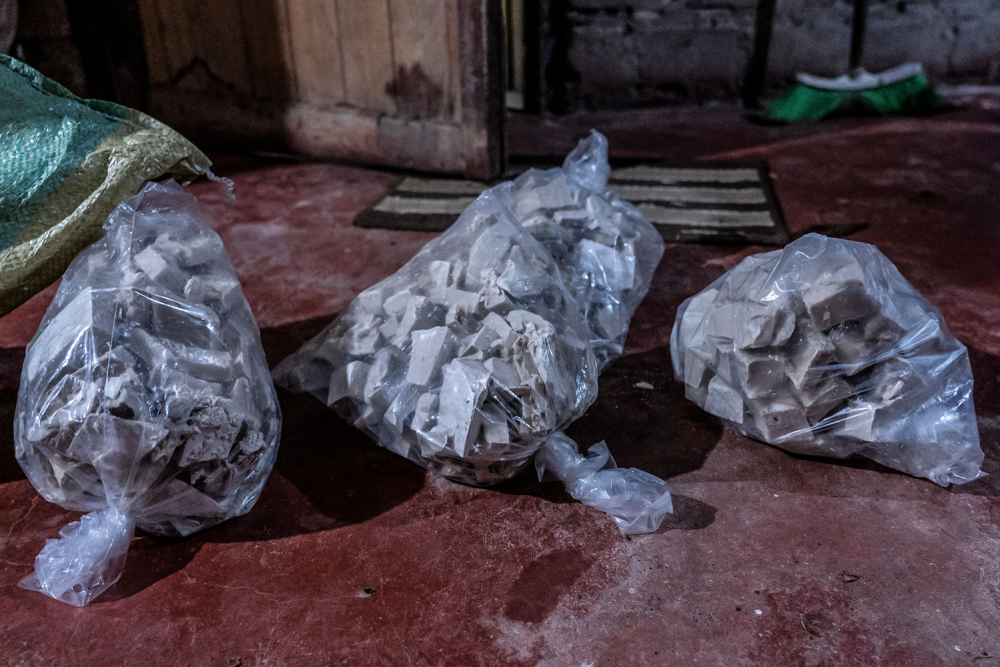
The U.S. Military Can’t Solve the Fentanyl Crisis.
Using the U.S. military in Mexico to deal with the fentanyl crisis in the United States is the hot new policy solution for lots of U.S. politicians. The top three Republican presidential candidates have endorsed using the U.S. military to fight Mexican cartels. Similarly, Republican Rep. Dan Crenshaw, the newly appointed chair of a congressional task force for countering Mexican cartels, announced recently that “Colombia is the model” for what Washington needs to do in Mexico.
Crenshaw is the author of a bill in Congress authorizing the use of military force against Mexican cartels or any actor “carrying out other related activities that cause regional destabilization in the Western Hemisphere.” He argues that the “American partnership” with Colombia helped make the country safer today than it was 25 years ago and that this provides a model for dealing with Mexican cartels:
“We need to somehow figure out diplomatically how to make this Mexico’s idea. That they’re asking for our military support, such as close air support, such as an AC-130 gunship overhead while they’re prosecuting a target and surrounded by sicarios. … If I was in that situation as a Navy SEAL, we would just call in close air support, all those guys would be gone, and we’d move along our merry way.”
This is bad analysis on a number of levels: bad history, bad economics, and bad political science. Since Crenshaw has volunteered himself as an expert on Colombia—he went to high school there—and its lessons for fighting the war on drugs with the U.S. military, we can start with his proposals.
In an Instagram post, Crenshaw stated, “Anyone who has watched Narcos knows that the Colombia of 30 years ago looked a lot like Mexico does today.”
The problem with that theory—beyond its reliance on a Netflix series to formulate U.S. foreign policy—is twofold. To begin with, if you consider annual homicide rates, today’s Mexico looks an awful lot like today’s Colombia. In 2021, Mexico had 28 homicides per 100,000 inhabitants, whereas Colombia’s rate was 27. This convergence—Mexico’s homicide rate surpassed Colombia’s for the first time in 2017—is certainly bad news for the former country, whose homicide rate was 8 per 100,000 inhabitants in 2007, one year after then-President Felipe Calderón deployed Mexican Army troops to fight the drug cartels. Nonetheless, despite seeing its homicide rate more than triple in less than two decades, Mexico is still nowhere near Colombia’s levels of violence during the Narcos era of the late 1980s and early 1990s, when the country reached the alarming rate of 85 homicides per 100,000 inhabitants. Comparing Mexico’s violence in 2023 to that of Colombia in 1993 borders on the preposterous.
Crenshaw’s argument also overlooks that Colombia today is slipping back to the 1990s, when the country, under siege from the Revolutionary Armed Forces of Colombia (FARC), a narco-guerrilla group, was on the verge of becoming a failed state. Although the homicide rate remains comparatively low, large swaths of the national territory are still under the control of the FARC and other illegal armed groups, which are expanding their spheres of influence. In May, the U.S. State Department issued a travel advisory to warn that three of the country’s 32 departments (the equivalent of U.S. states)—Cauca in the country’s southwest, Arauca and Norte de Santander in eastern Colombia—were high-risk areas due to widespread organized criminal activities including homicide, assault, armed robbery, extortion, and kidnapping.
According to the International Committee of the Red Cross, seven different armed conflicts are now taking place in Colombia (an increase from six in 2022). While the Colombian state battles the FARC, the National Liberation Army (ELN), and the Clan del Golfo, the latter armed group is waging its own war against the ELN. The FARC, meanwhile, is fighting two of its own splinter groups, Segunda Marquetalia and Comandos de la Frontera, the latter of which operates along extensive parts of the Venezuelan border. Finally, the FARC and the ELN, both communist narco-guerrilla groups, are facing off against each other for control over Arauca, a department that also controls key access routes into Venezuela.
Although each of the unofficial armed actors takes part in illegal mining, extortion, and other criminal activities, their main source of financing—and the main source of the conflicts among them—is the cocaine trade. The major difference between the situation now and that of the 1990s is that no single group enjoys a monopoly over the drug trade while waging an all-out war against the state, as the FARC then did. Instead, a multitude of armed actors fight both the state and one another over strategic coca-growing areas and export routes.
It is true that, overall, the conflict now has a lower intensity than in the 1990s, but Crenshaw’s thesis that Colombia is a safer, more peaceful place today than it was when he lived there at the turn of the century is valid only up to a point. For the population in entire departments like Arauca, Norte de Santander, and Cauca, the security situation is no less lethal now than two or three decades ago. It is unquestionable that the change in strategy in Bogotá and the assistance from Washington helped the Colombian military in its struggle against insurgent groups. But this misses the point. From a U.S. perspective, the reason for getting involved in the first place was to stanch the flow of cocaine into the United States. As seen above, that objective was not attained. From Colombia’s perspective, the tactical victory provided a some Colombians refuge from the conflict, but the country is still afflicted by the endemic violence that plagues countries stuck in the middle of the drug war.
Source: Foreign Policy
Have a query? Contact Us
